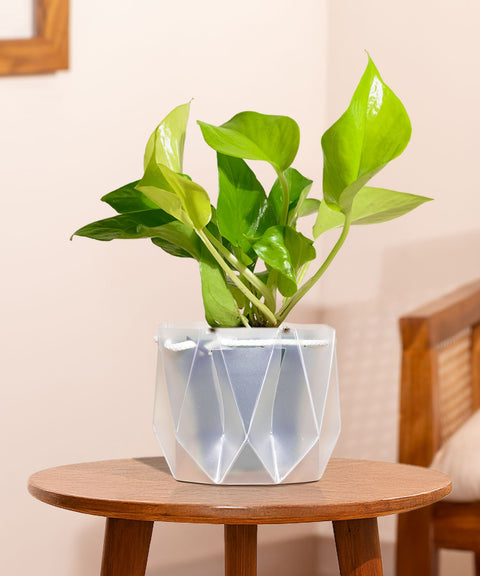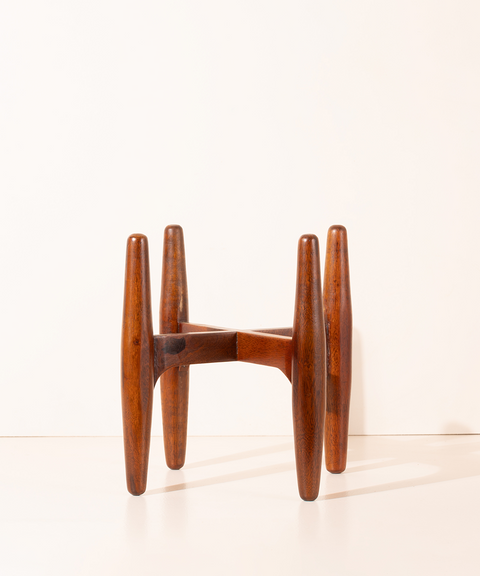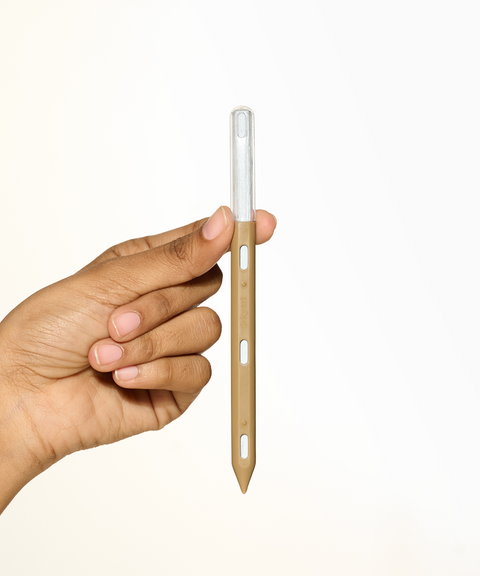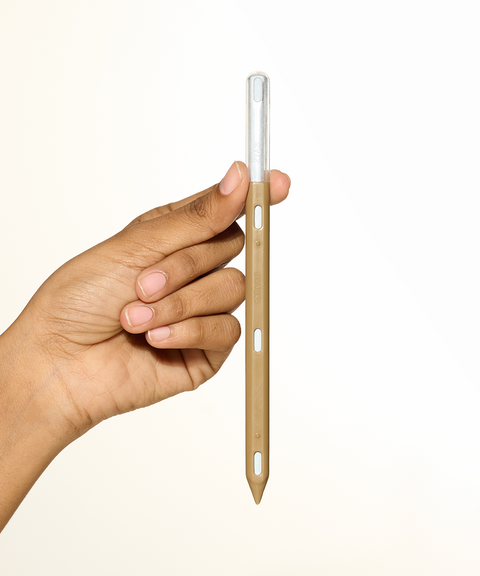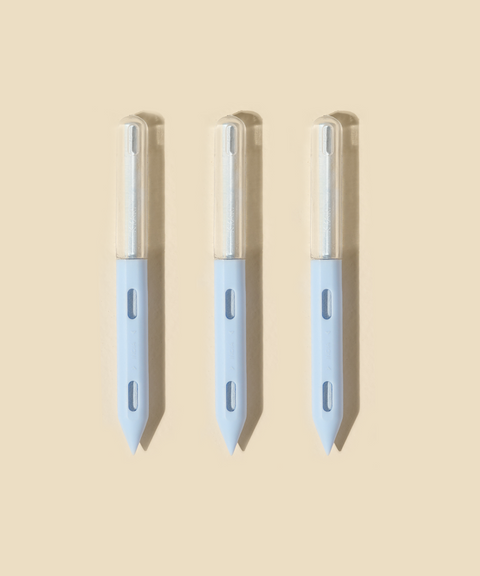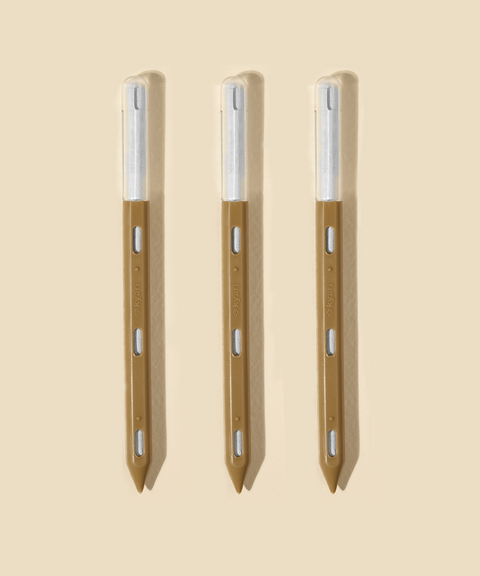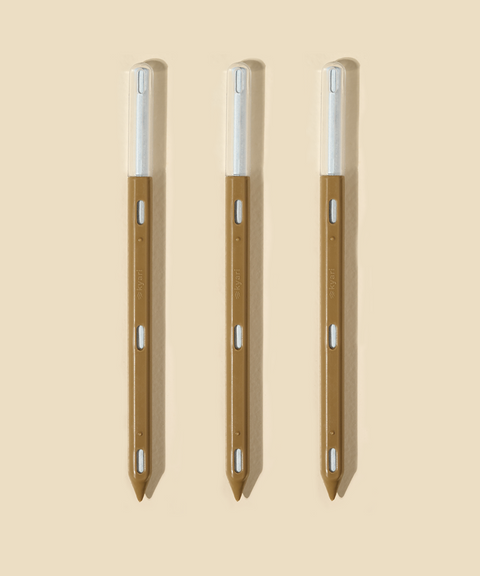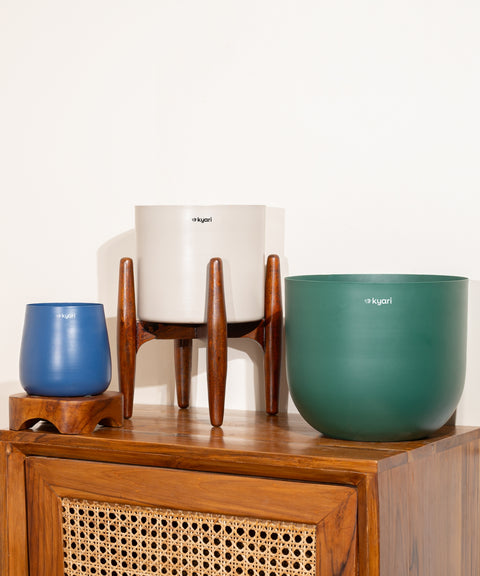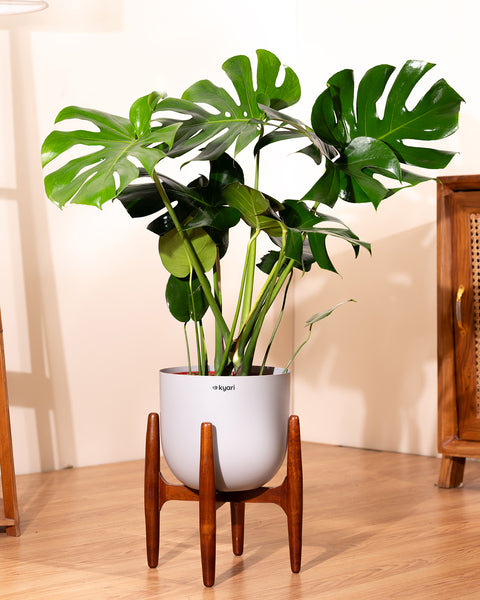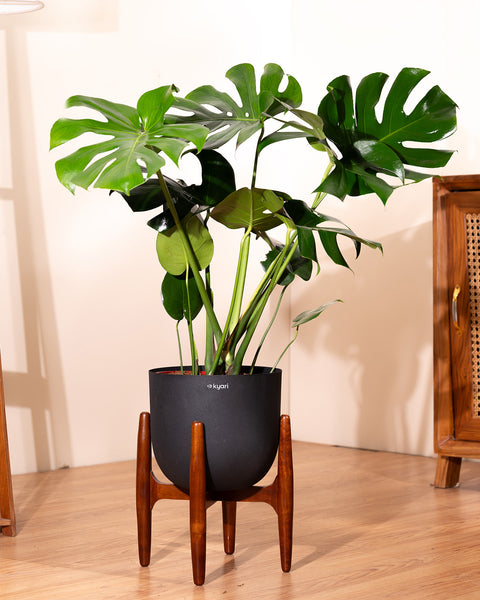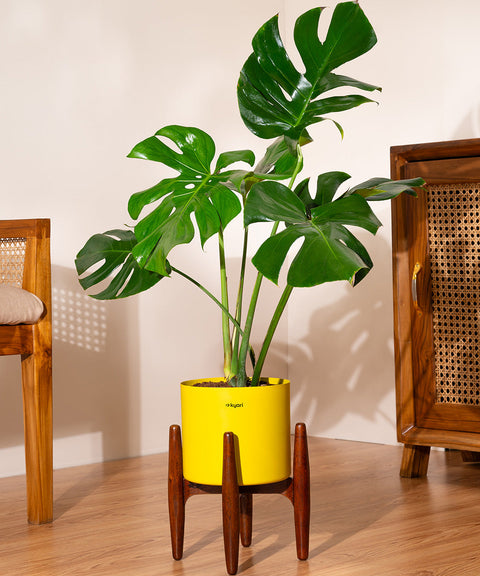The love for succulents can mainly be attributed to their hardiness and low maintenance system. This is the reason why these plants are often recommended to busy plant lovers and even those who are new to gardening. These are perhaps the most interesting and unique types of succulent plants that have evolved to conserve water in thick, fleshy leaves, stems, or roots in order to withstand dry conditions where other plants would simply die.
There are some familiar succulent varieties in India, like the Jade Plant or the Snake Plant, but there are many other fascinating types of string succulents that you have probably yet to encounter. In this blog, we shall explore more of these fascinating succulents, their advantages as house plants, and their maintenance.
Why Indoor Succulent Plants Are the Ultimate Low-Maintenance Plants?
This is made possible by the fact that different varieties of succulents can retain water in their leaves, stems, or roots. Ideal for an individual who is forgetful of always watering their plants. Most of the succulents do well under indirect sunlight and low light, making them appropriate for indoor areas including homes and offices with limited natural light. Moreover, the geometric shapes and textures of succulents make them a beautiful and modern addition to any household.
Types of Succulent Plant Varieties Some People Know in India
1. Candelabra Cactus
Resembling trees in its growth pattern, Candelabra Cactus is an ornamental succulent plant native to dry regions of Africa and scientifically known as Euphorbia lactea. Thick, erect, cylindrical stems at the center of this plant spread outwards and form candelabra shapes, which enhance its grand look. It is a type of cactus that uses minimal amounts of water, and bright indirect sunlight is perfect for it. Despite its appearance as an ordinary cactus, it does belong to the family of euphorbias, which means it weeps a milky fluid when pruned.
2. Jade Plant
Indian households also make use of the Jade Plant (Crassula ovata), a cactus plants that is one of the most sought-after types of succulent house plants globally. The plant has thick, fleshy round leaves that are shaped like small coins, and this has made it very popular in Feng Shui practices, where it is associated with good fortune and wealth. The jade plants flourish in bright indirect sunlight with an impressive growth rate if properly tended to. Eventually, they can mature into lovely little tree-like structures with hard stems.
3. ZZ Plant
The ZZ plant, scientifically known as Zamioculcas zamiifolia, is famous for its durability and low light tolerance since it can be grown indoors in homes and offices. The plant's glossy, deep green leaves complement any space, and it is unlikely to get damaged. You can even forget to water the ZZ Plant for weeks and even months and it will not die because its water storing rhizomes can last. It's a slow grower but can survive for many years, providing your area with some flair and liveliness.
4. Snake Plant
The Snake Plant, scientifically known as Sansevieria trifasciata, which is commonly called the Mother-in-Law's Tongue, is yet another widely appreciated, almost indestructible indoor succulent. This is because it can withstand a range of light conditions, from very low light to direct sunlight. Its elongated, broad, erect, and sword-like leaves come with a unique variegated pattern that brings great aesthetics to any room decor. Additionally, the Snake Plant is famous for its air-purifying properties, which makes it suitable for use in bedrooms or any other living space.
5. Crown of Thorns
The dragon tree or Crown of Thorns (Euphorbia milii) is among the most exceptional types of flowering succulents richly adorned with flowers. This plant contrasts with many other succulents, which are mainly coddled for their attractive leaves, in that they produce clusters of small red, pink, or yellow flowers attractive to succulent lovers. It can withstand drought and does well under bright sunlight. Yet, as with the other euphorbia, it has a milky latex sap that poses a potential risk to the skin. Thus, caution is highly recommended.
6. Basella
Basella or Malabar Omum is among the obscure edible types of succulents in India. In contrast to usual succulents, Basella is a climbing plant that bears thick, juicy leaves. This vegetable is known to be used in India for its health benefits and distinctive taste. Basella grows in warm tropical regions and can be taken up indoors and outdoors making it a useful plant in Indian homes.
7. Moth Orchids
Moth orchids are generally not regarded as succulents, but there are a few characteristics that are succulent-like in these different types of flowering succulents. These fleshy leaves and roots help conserve water and endure droughts. These orchids also bloom in elegant flowers for long periods of time, which are shaped like moths flying. Moth orchids grow in warm, moist conditions as well as in bright, diffused sunlight, and this makes them slightly harder than growing normal succulents, but the beauty is worth the hard work.
8. Portulacaria afra
Portulacaria afra, commonly referred to as the "Elephant Bush" or "Mini Jade Plant," is a small succulent resembling a Jade Plant, only in smaller dimensions. It is often found within the interiors of bonsai and most fans of succulents admire it for its adaptability to different circumstances. Portulacaria afra is cultivated both indoors and outdoors, and it has fleshy leaves that help it to retain water, hence, it is semi-arid tolerant and easy to manage.
Conclusion
On the ease of maintenance spectrum, all types of succulents are extremely appealing. This is thanks to their diverse array of unique species, which can grow both below and above the ground. In the right environment, succulents will grow and flourish, enhancing any living space with color and texture as well as purifying the air. They say that everyone will find the right plant they are seeking among this group, including those who already have a well-established garden and those who are just starting to plant at home. You can shop them today at Kyari!
Frequently Asked Questions
1. What is the difference between indoor and outdoor succulents?
In general, indoor succulents tend to flourish in less sunlight and controlled surroundings, whereas outdoor succulents can tolerate direct suns rays and harsh weather for short periods.
2. Can succulents grow in low light?
Quite a number of succulents, like the ZZ Plant and Snake Plant, tend to corners with very low levels of light. However, most of the succulents will still do well and even grow better under some bright but indirect light.
3. Are there succulents that bloom year-round?
Generally, most succulents will flower during certain seasons, although there are different types of succulent plants such as the Crown of Thorns that will bloom zealously throughout the year provided they are well cared for.
4. Are there succulents that change colour with the seasons?
Indeed, some of the succulents, which are cacti like the Echeveria or Sempervivum species, can also colour up owing to the changes in an external environment such as light, temperature, and moisture content. In some cases, these plants tend to acquire colours like red, purple, and orange in composition during the hot or sunny seasons.








 Limited Time Deal
Limited Time Deal
 BYOB - Small Plants
BYOB - Small Plants






























